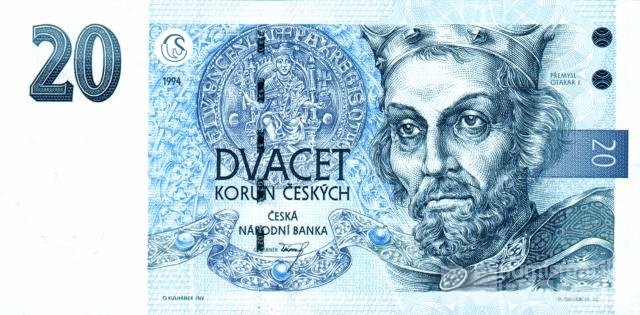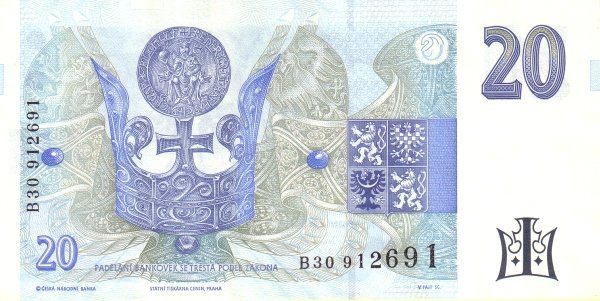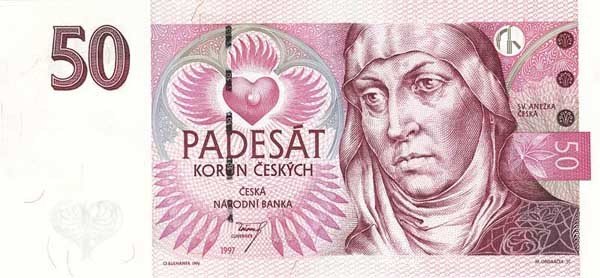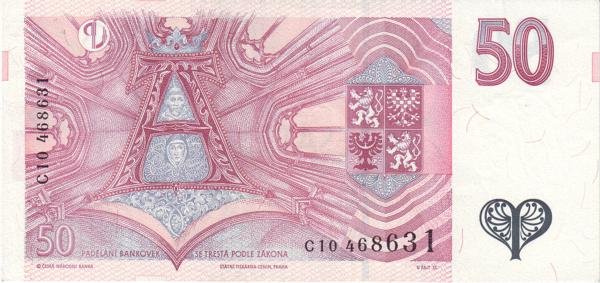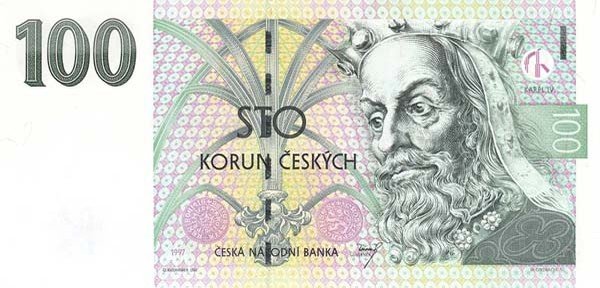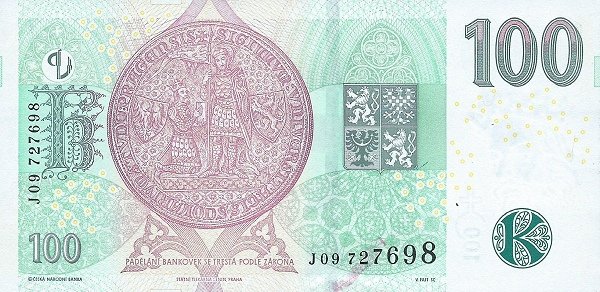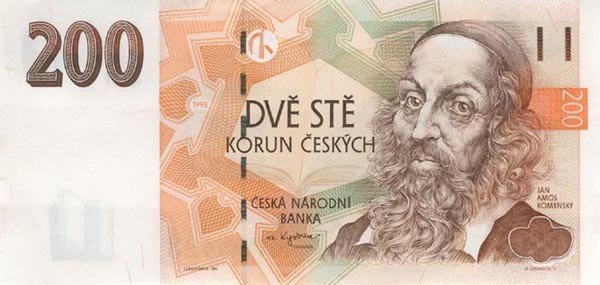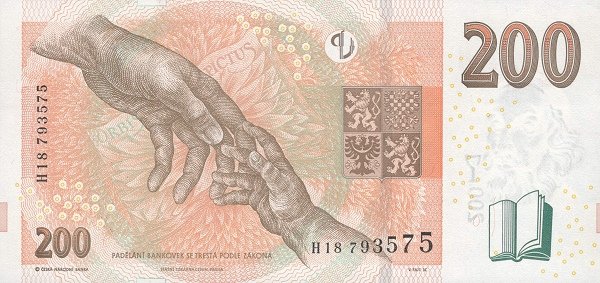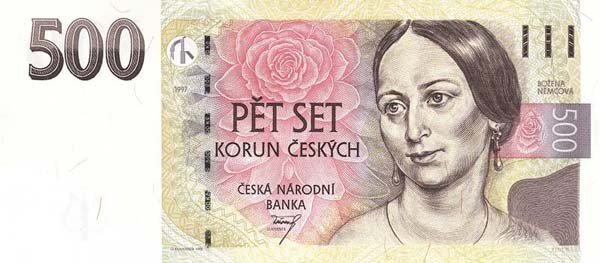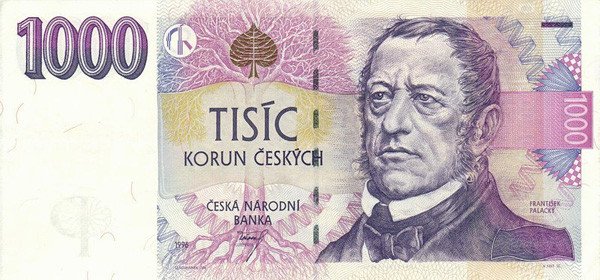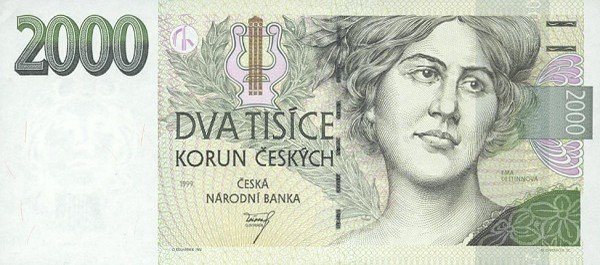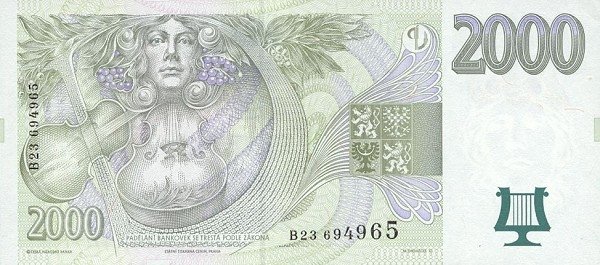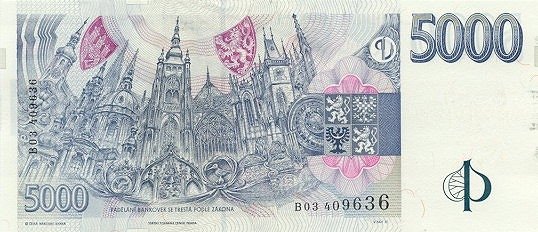Oldřich Kulhánek was a Czech artist best known for his work on designing the current Czech banknotes. Kulhánek was born in 1940 in Prague and in 1958 he went to the Academy of Arts, Architecture and Design in Prague to study under Karel Svolinksy. In 1964, Kulhánek graduated and from 1968 to 1971 he created politically charged art pieces that would get him arrested by the StB due to the art negatively portraying Communist leaders and his art slated to be destroyed. His work was saved though he was banned from publishing any of his works going forward.
Following the Velvet Revolution and the collapse of Communist rule in 1989, Kulhánek was once again able to publish his works, focusing on lithography. Free to travel, he visited other countries like the United States as a visiting professor. Oldřich Kulhánek died on January 28, 2013, in Prague. His most notable work in lithography during his life was designing the current Czech banknotes, known as the Czech koruna (Kč), and postage stamps. This was a commission that was said to be quite prestigious.
The first of these banknotes is the 20 Kč, which depicts Otakar I on the front, a famous Duke and King of Bohemia and a member of the Přemyslid dynasty, and his crown on the back along with the Seal of the Golden Bull of Sicily.
The next banknote is the 50 Kč, which depicts Saint Agnes, a Bohemia princess who devoted her life to charity and piety, on the front and the Vault of St. Salvator’s Church on the back.
The 100 Kč banknote shows Charles IV, Holy Roman Emperor and King of Bohemia, with the Seal of Charles University which he founded on the back.
The 200 Kč has John Amos Comenius, a Moravian philosopher and theologian who was considered the father of modern education. The back depicts the Orbis Pictus, a children’s book that Comenius wrote and joined hands of an adult and a child.
The 500 Kč depicts Božena Němcová on the front, a Czech writer who wrote during the final phase of the Czech National Revival movement, and on the back is depicted a laureate woman.
The 1000 Kč depicts František Palacký, the most influential person of the Czech National Revival and known as the “Father of the Nation”, with Kroměříž Castle and an eagle shown on the back.
The 2000 Kč depicts Emmy Destinn on its front, a Czech operatic dramatic soprano and one of the greatest opera singers of the 19th and 20th centuries. on the back of the banknote is an euterpe, violin, and cello.
The 5000 Kč depicts Tomáš Masaryk, the first president of Czechoslovakia and its founding father. On the back of the banknote is shown St. Vitus Cathedral, along with other Gothic and Baroque styled buildings in Prague.
Written by James Travis
Sources:
“Banknotes from the Czech Republic.” Numista, 2023. https://en.numista.com/catalogue/republique_tcheque-banknotes-1.html.
“Currency Gallery: Czech Republic.” Banknotes, 2023. https://www.banknotes.com/cz.htm.
“Czech Koruna.” Wikipedia, 2023. https://en.wikipedia.org/wiki/Czech_koruna.
“Oldrich Kulhanek.” Kabinet Ceske Grafiky, 2016. https://www.fineart.cz/artist_page.aspx?langId=2&artist=26.
“Oldrich Kulhanek.” Wikipedia, 2023. https://en.wikipedia.org/wiki/Oldřich_Kulhánek.
“Oldrich Kulhanek Biography.” The Annex Galleries, 2023. https://www.annexgalleries.com/artists/biography/3195/Kulhanek/Oldrich.


